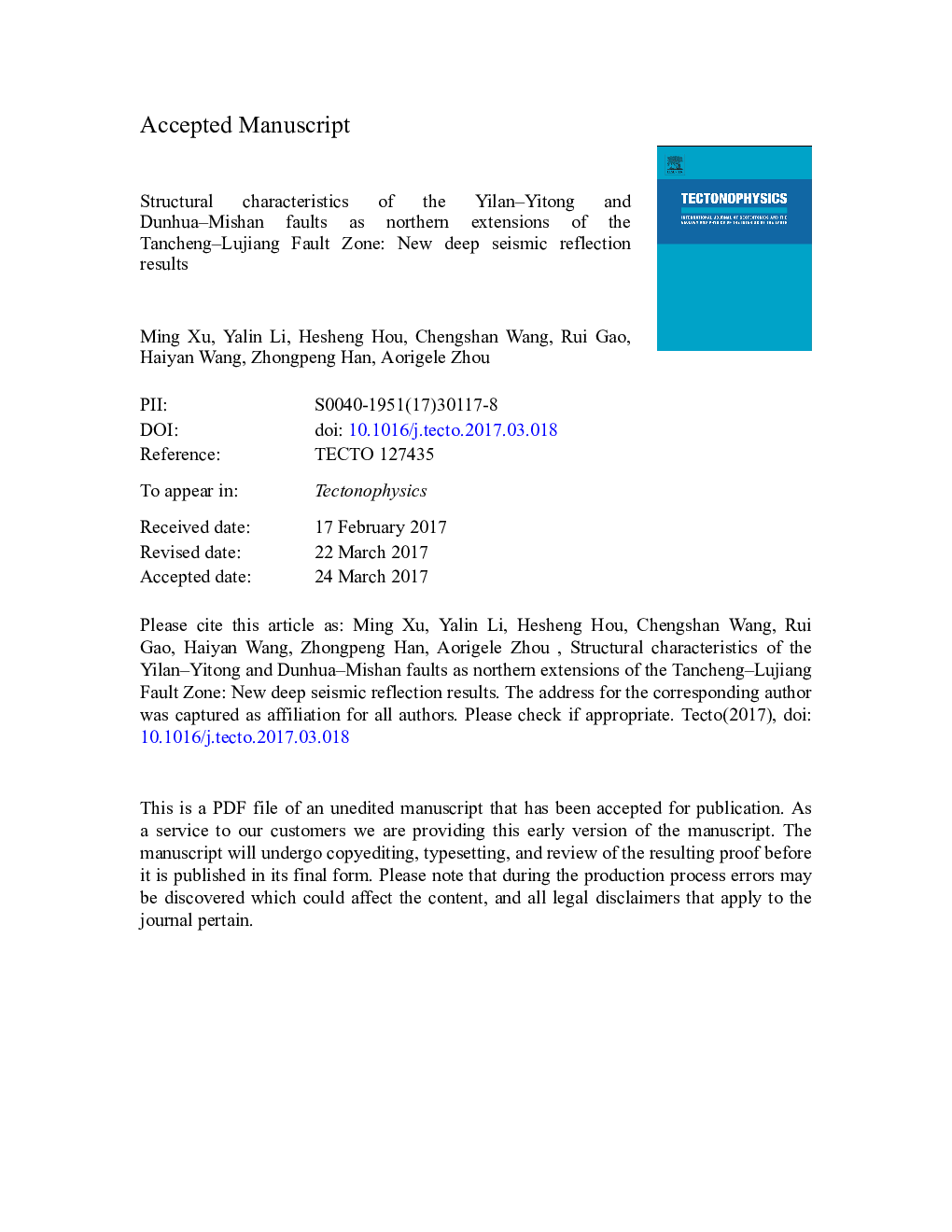| Article ID | Journal | Published Year | Pages | File Type |
|---|---|---|---|---|
| 5781503 | Tectonophysics | 2017 | 43 Pages |
Abstract
The Tancheng-Lujiang Fault Zone (TLFZ) can be subdivided into three segments that exhibit sharp contrasts in their deep structures. A deep seismic reflection profile (length ~Â 600Â km) across the north part of the TLFZ, which provides new constraints on the structural styles of the northern TLFZ, was recently completed by the Chinese Sinoprobe Project. Here, the TLFZ branches into the Yilan-Yitong Fault (YYF) to the west and the Dunhua-Mishan Fault (DMF) to the east. The YYF developed as an internal fault in the Songnen-Zhangguangcai massif, while the DMF serves as the tectonic boundary between the Nadanhada terrane and the Khanka massif. Both faults developed large-scale flower structures, with that of the YYF being negative and that of the DMF being positive with reverse faults. The Moho in the profile is at a depth of 25-39Â km and is offset by the faults. The north part of the TLFZ extends into the upper mantle as thin shear zones with the reflectors truncated in the middle/lower crust. This feature differs from most crustal-scale strike-slip faults that distribute over a discrete shear zone in the lower crust, such as the San Andreas Fault.
Keywords
Related Topics
Physical Sciences and Engineering
Earth and Planetary Sciences
Earth-Surface Processes
Authors
Ming Xu, Yalin Li, Hesheng Hou, Chengshan Wang, Rui Gao, Haiyan Wang, Zhongpeng Han, Aorigele Zhou,
